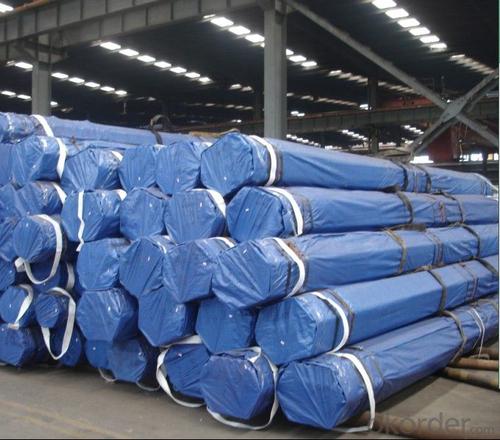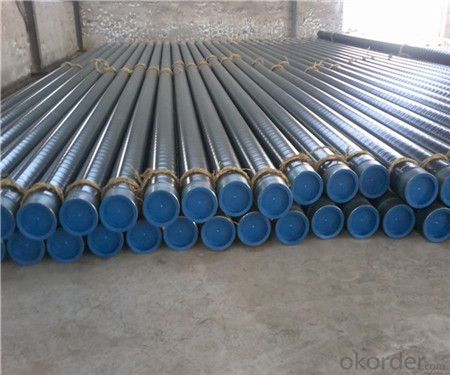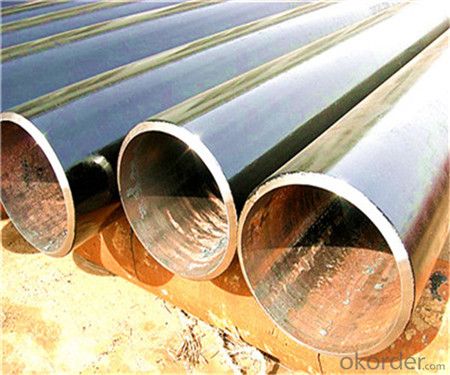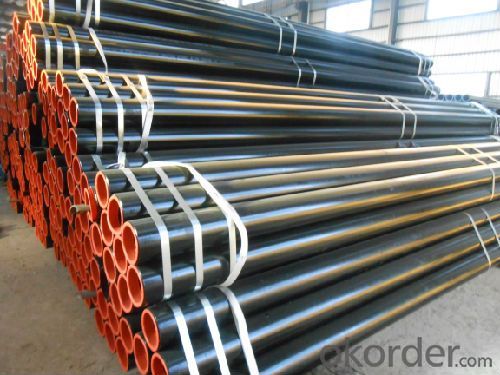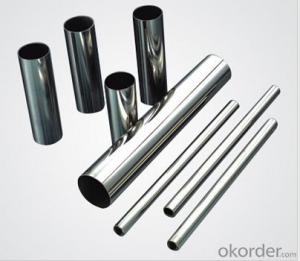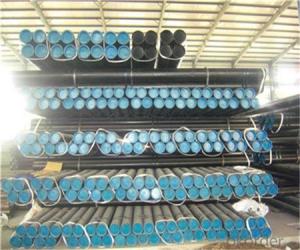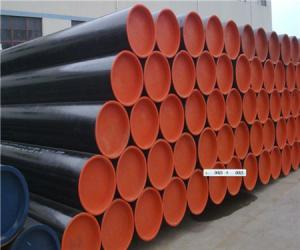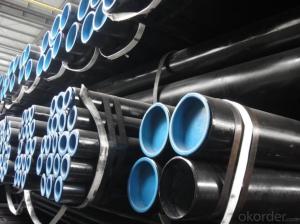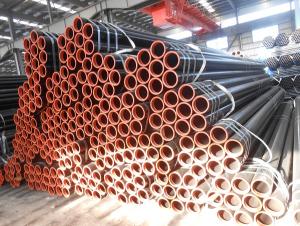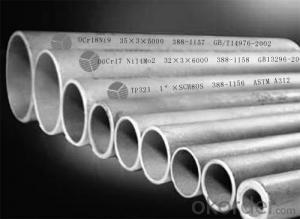Steel Seamless Pipe Mechanical pipe (EN 10297) Supplier
- Loading Port:
- China Main Port
- Payment Terms:
- TT or LC
- Min Order Qty:
- 30 m.t.
- Supply Capability:
- 12000 m.t./month
OKorder Service Pledge
OKorder Financial Service
You Might Also Like
1、Full series of products provides an easier access for one stop purchase
▲ Line pipe
▲ Tubing and casing
▲ L & M & H boiler tube
▲ Gas cylinder tube & pipe
▲ Mechanical & Structural pipe
▲ Ship-building tube & pipe
▲ Automobile tube & pipe
2、Main Features of the Seamless Pipe ASTM A106/53:
• High manufacturing accuracy
• High strength
• Small inertia resistance
• Strong heat dissipation ability
• Good visual effect
• Reasonable price
3、Seamless Pipe ASTM A106/53 Specification:
Standard | GB, DIN, ASTM ASTM A106-2006, ASTM A53-2007 |
Grade | 10#-45#, 16Mn 10#, 20#, 45#, 16Mn |
Thickness | 8 - 33 mm |
Section Shape | Round |
Outer Diameter | 133 - 219 mm |
Place of Origin | Shandong, China (Mainland) |
Secondary Or Not | Non-secondary |
Application | Hydraulic Pipe |
Technique | Cold Drawn |
Certification | API |
Surface Treatment | factory state or painted black |
Special Pipe | API Pipe |
Alloy Or Not | Non-alloy |
Length | 5-12M |
Outer Diameter | 21.3-610mm |
Grade | 20#, 45#, Q345, API J55, API K55, API L80, API N80, API P110, A53B |
Standard | ASME, ASTM |
4、Packaging & Delivery
Packaging Details: | seaworthy package,bundles wrapped with strong steel strip |
Delivery Detail: | 15-30days after received 30%TT |
5、FAQ of Seamless Pipe ASTM A106/53:
Why should you chose us?
● Full series of products provides an easier access for one stop purchase
▲ Electric Resistance Welded (ERW) Steel Pipe
▲ Longitudinal Submerged Arc Welded (LSAW) Steel Pipe
▲ Spiral Submerged Arc Welded (SSAW) Steel Pipe
▲ Hollow Section (Square and Rectangle Pipe)
▲ Hot Dipped Galvanized Steel Pipe
6、Seamless Pipe ASTM A106/53 Images:
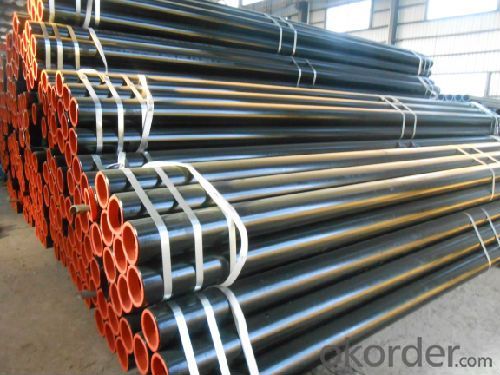
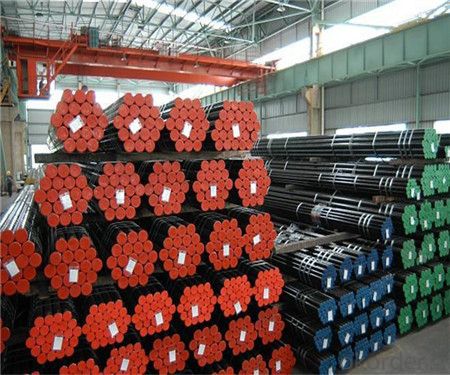
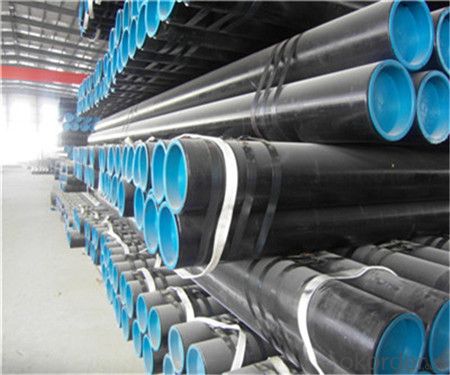
- Q: What are the different types of hangers used for supporting steel pipes?
- Supporting steel pipes requires the use of various hangers, each with its own distinctive design and purpose. Some commonly used types include: 1. Clevis Hangers: These hangers consist of a U-shaped loop that attaches to a support structure using a threaded rod. The pipe is then secured in place with a bolt. Clevis hangers are ideal for vertical pipe runs and provide excellent stability and support. 2. Split Ring Hangers: Designed with a split ring that wraps around the pipe, these hangers can be easily installed and adjusted. They are suitable for different pipe sizes and applications. 3. Pipe Clamps: Simple and versatile, pipe clamps consist of a metal clamp that wraps around the pipe and is secured to a support structure using screws or bolts. They come in various designs to accommodate different pipe sizes and ensure stability. 4. Beam Clamps: These hangers are specifically designed for overhead support beams or structures. They feature a clamp that wraps around the beam and attaches to the pipe using a threaded rod or bolt. Beam clamps are commonly used in industrial and commercial settings for horizontal pipe runs. 5. Roller Hangers: When pipe movement is necessary due to thermal expansion or contraction, roller hangers are used. They allow the pipe to move freely while still providing support, making them suitable for long pipe runs or areas with significant temperature variations. 6. Spring Hangers: Designed to support pipes and absorb vibrations or shocks, spring hangers consist of a spring element attached to a support structure and a rod or rod assembly that supports the pipe. They are often used to reduce noise or prevent damage caused by vibrations. These examples represent just a few of the hangers available for supporting steel pipes. The selection of a hanger depends on factors such as pipe size, weight, location, and specific installation requirements. It is recommended to consult with a professional or engineer to ensure the appropriate hangers are chosen for each specific application.
- Q: What are the different methods of transporting steel pipes?
- There are several methods of transporting steel pipes, including by truck, rail, ship, and pipeline. Each method has its advantages and is chosen based on factors such as distance, cost, and accessibility. Trucks are commonly used for shorter distances or when the delivery location is not easily accessible by other means. Rail transport is efficient for long distances and can handle large quantities of steel pipes. Shipping by sea is ideal for international shipments or when the destination is located near a port. Lastly, pipelines are used for transporting steel pipes for oil and gas industries, as they provide a direct and continuous flow.
- Q: How do you determine the weight per foot of a steel pipe?
- To ascertain the weight per foot of a steel pipe, there are two primary factors to consider: the pipe's thickness and diameter. Initially, it is necessary to measure the pipe's outer diameter (OD) and wall thickness (WT) using either a caliper or a measuring tape. Upon obtaining these measurements, the inner diameter (ID) can be determined by subtracting twice the wall thickness from the outer diameter (ID = OD - 2 * WT). Subsequently, utilize the formula for the cross-sectional area of the pipe (A = π * (OD^2 - ID^2) / 4) to calculate the cross-sectional area. Lastly, multiply the cross-sectional area by the steel's density, typically around 490 pounds per cubic foot, to derive the weight per foot of the steel pipe. Weight per foot (WPF) = A * 490 It is vital to acknowledge that this calculation provides an approximation of the weight per foot, as manufacturing tolerances and slight variations in steel density may impact the actual weight. Thus, it is advisable to employ this calculation as a reference and consult the manufacturer's specifications for more accurate information.
- Q: A333gr6 steel pipe and domestic material of the same?
- The SA333 standard in ASME (cryogenic seamless and welded nominal steel tubes), so A333-6 is a representation of the United States, followed by many countries.
- Q: How to perform nondestructive inspection of steel tubes
- The detection principle is based on the ferromagnetic material is magnetized in a magnetic field, discontinuity materials and products (defects) produce leakage magnetic field, magnetic powder adsorption (or detecting) and appear (or on the instrument display). Therefore, this method can only be used for the inspection of the surface or near surface defects of ferromagnetic materials or products.
- Q: What is the impact of temperature on steel pipes?
- The impact of temperature on steel pipes is significant and can have both positive and negative effects. At high temperatures, steel pipes can experience thermal expansion, causing them to expand and potentially leading to distortion or buckling. This expansion can also affect the joints and connections, potentially causing leaks or failures. Therefore, it is crucial to consider the coefficient of thermal expansion when designing and installing steel pipes in high-temperature environments. On the other hand, steel pipes typically have excellent thermal conductivity, allowing them to withstand high temperatures without significant degradation. This makes them suitable for applications where heat transfer is a primary concern, such as in industrial processes or heating systems. Extreme cold temperatures can have detrimental effects on steel pipes as well. In freezing conditions, water or other fluids inside the pipes can expand and lead to cracks or bursts. This can cause leaks, loss of fluid, and potential damage to surrounding structures. Therefore, appropriate insulation and preventive measures need to be taken to ensure the integrity of steel pipes in cold environments. Additionally, temperature variations can also affect the mechanical properties of steel, such as its tensile strength and toughness. For instance, exposure to elevated temperatures over an extended period can lead to a phenomenon known as thermal degradation, where the steel's strength decreases, making it more prone to deformation or failure. In conclusion, the impact of temperature on steel pipes is significant and can influence their structural integrity, thermal performance, and mechanical properties. Proper design, insulation, and maintenance are essential to ensure the safe and efficient operation of steel pipes in various temperature conditions.
- Q: What is the difference between steel pipe and copper pipe?
- The main difference between steel pipe and copper pipe lies in their material composition. Steel pipe is made of steel, while copper pipe is made of copper. Steel pipe is stronger and more durable, making it suitable for high-pressure and heavy-duty applications. On the other hand, copper pipe is more malleable and corrosion-resistant, making it ideal for plumbing and water supply systems. Additionally, copper pipe is more expensive than steel pipe but offers better heat conductivity, making it suitable for heating and cooling applications.
- Q: Can steel pipes be recycled and used for other purposes?
- Yes, steel pipes can be recycled and used for other purposes. Steel is a highly recyclable material, and steel pipes are no exception. Recycling steel pipes helps to conserve natural resources and reduce the demand for new steel production. When steel pipes are recycled, they are typically sent to a recycling facility where they are sorted, cleaned, and processed. The pipes are then crushed into smaller pieces or melted down to be reshaped into new steel products. Recycled steel pipes can be used for a variety of purposes. They can be used in construction projects, such as for building bridges, roads, or buildings. They can also be used in the manufacturing of new steel products, such as automotive parts, appliances, or furniture. Additionally, recycled steel pipes can be used in the energy sector, for example, in the production of wind turbines or oil and gas pipelines. Using recycled steel pipes not only helps to reduce waste and conserve resources but also has environmental benefits. The recycling process requires less energy and produces fewer greenhouse gas emissions compared to the production of new steel. Therefore, recycling steel pipes is a sustainable option that contributes to a circular economy and helps to protect the environment.
- Q: Can steel pipes be used for geothermal applications?
- Yes, steel pipes can be used for geothermal applications.
- Q: What are the different types of coatings used for internal lining of steel pipes?
- There are several types of coatings commonly used for the internal lining of steel pipes, including epoxy coatings, polyurethane coatings, and cement mortar linings. These coatings are applied to protect the steel pipes from corrosion, improve the flow of fluids, and enhance the longevity and durability of the pipes.
Send your message to us
Steel Seamless Pipe Mechanical pipe (EN 10297) Supplier
- Loading Port:
- China Main Port
- Payment Terms:
- TT or LC
- Min Order Qty:
- 30 m.t.
- Supply Capability:
- 12000 m.t./month
OKorder Service Pledge
OKorder Financial Service
Similar products
Hot products
Hot Searches
Related keywords




